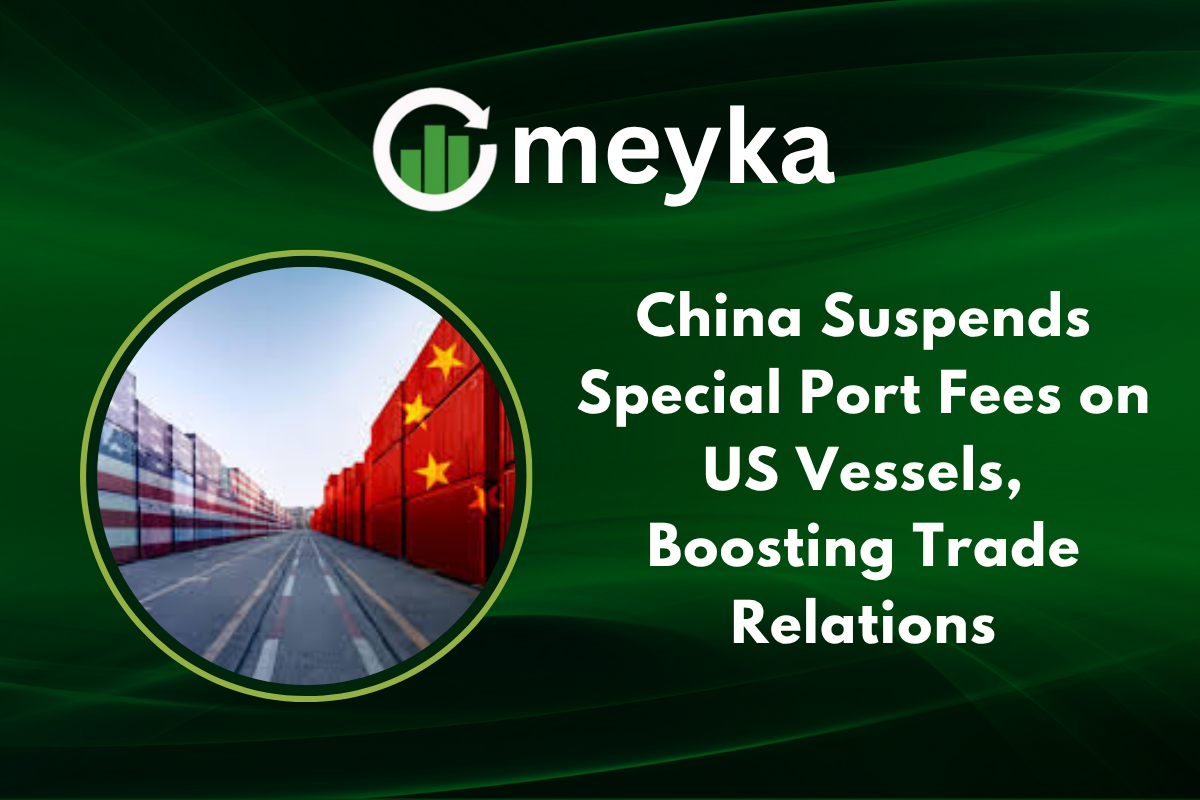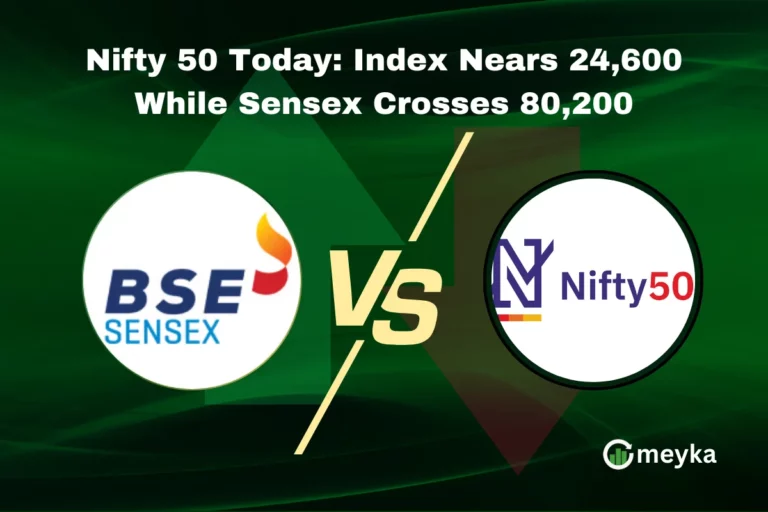China Suspends Special Port Fees on US Vessels, Boosting Trade Relations
China has suspended special port fees on US vessels for one year, starting November 10, 2025 at 13:01 Beijing time, in a move aligned with Washington’s pause on levies targeting Chinese ships, officials signalled a step toward easing tensions and stabilising shipping ties between the two countries.
What the suspension means for US vessels and ports
China’s transport ministry said it would suspend port fees on US linked ships for one year starting 13:01 local time on November 10, 2025. The suspension covers fees that Chinese authorities had levied on vessels with United States links that call at Chinese ports. This timing detail gives carriers and shippers a clear compliance start point for billing and voyage planning.
When does the relief begin? It starts at 13:01 in Beijing on November 10, 2025, as stated by China’s transport ministry.
Business Recorder added that Beijing framed the move as simultaneous with Washington’s fee pause on Chinese ships, which means planners on both sides can expect aligned relief windows that make round trip scheduling simpler.
Does the policy match a similar step by the United States? Yes, China says its suspension is simultaneous with Washington’s pause on levies that targeted Chinese ships.
How US vessels operators can respond now
Operators of US flagged or US linked ships that call at Chinese ports can review current port calls, invoices, and port disbursement accounts to reflect the new fee holiday. Voyage managers can update cost models for the next twelve months, while chartering desks can reassess route economics where Chinese calls are involved. Reuters confirms the fee suspension is official and time stamped, which supports immediate operational updates.
Should invoices be adjusted right away? Yes, from the stated start time, plans and invoices should reflect the suspension window for calls at Chinese ports.
Port authorities and terminal operators in China may see adjustments in throughput as carriers reconsider rotations that had shifted due to fee exposure. Business Recorder notes that the move comes alongside easing steps from Washington, which can jointly improve service stability on trans Pacific lanes.
Will schedules change quickly? Some rotations may update in the next booking cycles, since aligned suspensions reduce cost pressure and uncertainty.
Trade compliance and documentation
Compliance teams should capture the effective date and time in their internal memos and routing guides. Port call agents should confirm with local authorities in Shanghai and other major gateways to ensure fee items are removed from pro forma disbursements during the suspension. The Reuters item gives the official start marker, which is the key line for audit trails and shipper notices.
What documents need updates? Port cost sheets, voyage estimates, carrier advisories, and shipper rate notes should carry the effective time and the one year window.
Signals for routes, rates, and supply chains that involve US vessels
The fee holiday reduces specific port call costs on the China side for US vessels, and the parallel step from Washington lowers exposure for Chinese ships that serve the United States. Bloomberg’s note about suspended probes adds a further signal of easing. Together, these actions can support steadier slot supply and more predictable rates on affected lanes.
Will freight rates fall? Rates reflect many inputs, but removing a fee line and reducing legal risk can ease upward pressure, especially on services that include Chinese port calls.
Business Recorder highlights the simultaneous nature of the moves, which is helpful for round trip planning and for integrated logistics teams that need mirrored policies to reduce asymmetry. More balanced rules make it easier to keep schedules and to honour service level agreements.
Does the step cover an entire contract year? The policy is set for one year from the effective time, so contract teams can plan within that window, while watching for any updates.
Port operations and cargo flows
The decision arrives as both countries manage sensitive trade issues. Even limited easing can reduce gate congestion risk tied to last minute cost disputes. Clear start times help terminal finance teams avoid billing disputes, which in turn reduces hold ups for container release and export gate moves. Reuters provides the exact activation time, which is valuable for reconciliation.
Which cargoes benefit? Any shipment that relies on vessels calling at Chinese ports as part of trans Pacific services can see indirect benefits through lower cost and steadier schedules.
Policy backdrop and what comes next for US vessels
As Business Recorder reports, the step sits within a fragile truce, following recent leader level contact. It is focused on the maritime lane, not a full trade reset. That is why operators should treat the suspension as a window to stabilise networks and to rebuild schedule reliability.
Is this permanent? No, it is a one year suspension, and future policy will depend on talks and on how both sides assess the effects.
Practical guidance for shippers that rely on US vessels
Operations, record the effective time and one year window in voyage planning tools. Finance, remove the China side fee lines from the pro forma port disbursements that fall within the window. Sales, communicate the relief to customers whose contracts reference China port calls. Compliance: keep citation copies of the Reuters and Business Recorder reports in audit files.
How should forwarders message clients? Share a short notice with the start time, the one year duration, and links to the source reports, then outline route or price effects for China calls.
Conclusion
China’s decision to suspend special port fees on US vessels for one year, aligned with Washington’s pause and coupled with mutual probe suspensions, offers practical relief and a clearer near term path for trans Pacific shipping. The window is limited, but it can help stabilise networks, improve cost visibility, and reduce legal risk while talks continue.
Takeaway: One year of fee relief and probe pauses lowers friction now, so carriers should lock in schedules and update contracts while the window is open.
FAQs
China suspended the fees to ease shipping tensions and support trade stability with the United States. The suspension aligns with Washington’s pause on levies targeting Chinese ships. It is part of broader efforts to reduce friction in maritime trade.
The suspension lasts one full year from the official start date announced by China’s transport ministry. It applies to all US linked vessels calling at Chinese ports. The duration may be reviewed based on future talks.
Shipping companies can expect reduced port costs and fewer regulatory uncertainties. The move supports smoother planning, better route stability, and improved cost visibility. Carriers benefit from aligned policies on both sides.
It helps free up pressure on trans Pacific routes and reduces unexpected fee impacts. Stability in China US shipping lanes can reduce delays and cost fluctuations. Lower friction improves predictability for logistics planning.
Disclaimer
The content shared by Meyka AI PTY LTD is solely for research and informational purposes. Meyka is not a financial advisory service, and the information provided should not be considered investment or trading advice.






